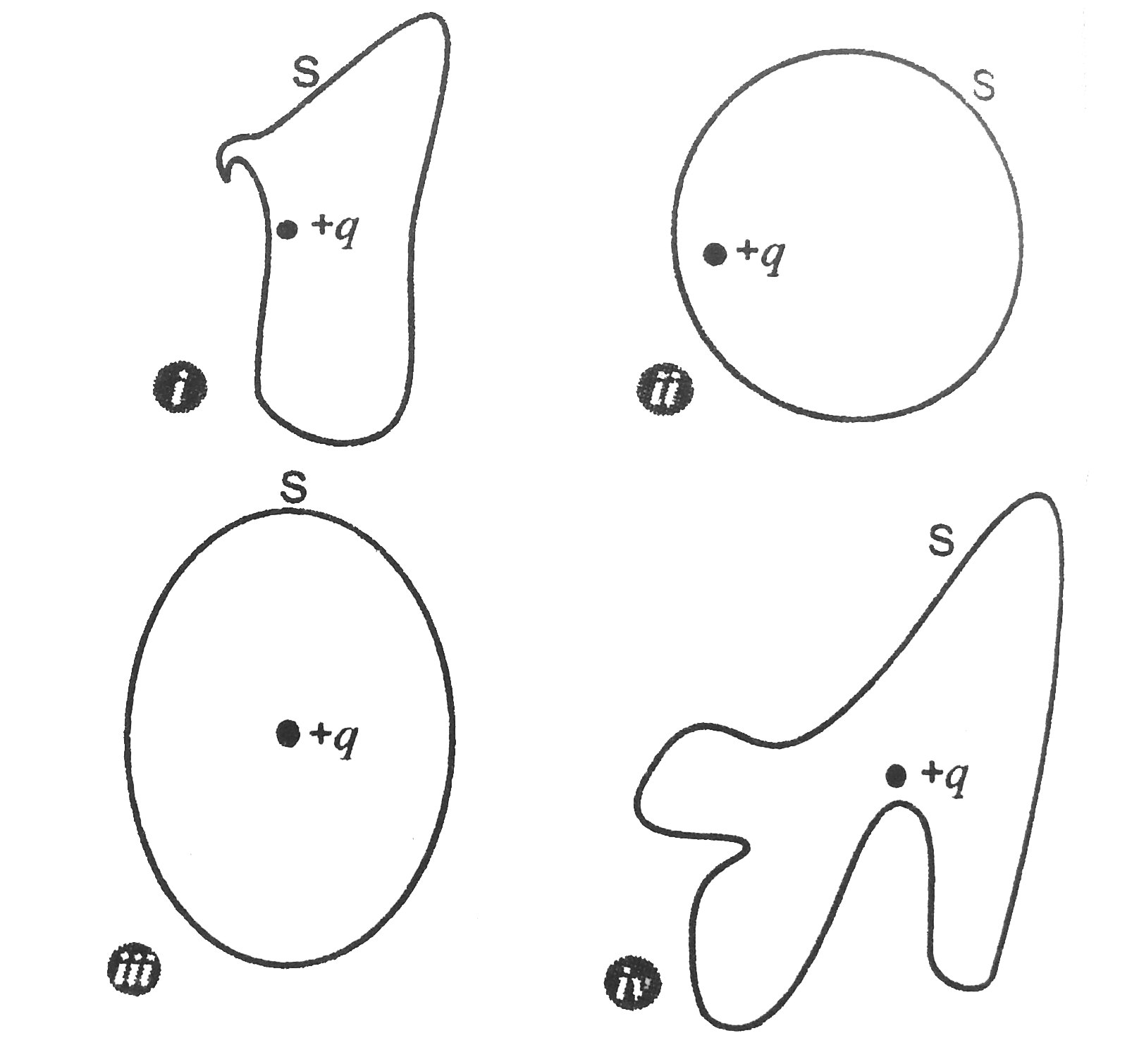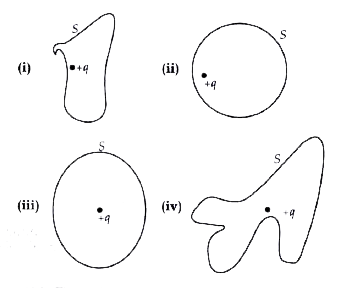An arbitrary surface encloses a dipole. What is the electric flux through this surface ?
From gauss' law, the electric flux through an enclosed surface is given by ∮SE.dS=qε0
Now, the net charge on a dipole is given by -q+q=0
∴ Electric flux through a surface enclosing a dipole =−q+qε0=0ε0=0
Topper's Solved these Questions
Similar Questions
Knowledge Check
The electric flux through the surface
 Ain fig. (iv) is the largestBin fig. (iii) is the leastCin fig. (ii) is same as fig.(iii) but is smaller than fig.(iv)DIs the same for all the figures.
Ain fig. (iv) is the largestBin fig. (iii) is the leastCin fig. (ii) is same as fig.(iii) but is smaller than fig.(iv)DIs the same for all the figures.The electric flux through the surface
 Ain fig, (iv) is the largestBin fig, (iii) is the leastCin fig (ii) is same as a fig (iii) but is smaller than that in Fig (iv).Dis the same for all the figures.
Ain fig, (iv) is the largestBin fig, (iii) is the leastCin fig (ii) is same as a fig (iii) but is smaller than that in Fig (iv).Dis the same for all the figures.What is the electric flux linked with closed surface?
 A1011N−m2/CB1012N−m2/CC1010N−m2/CD8.86×1013N−m2/C
A1011N−m2/CB1012N−m2/CC1010N−m2/CD8.86×1013N−m2/C
A point charge of 2.0μC is at the centre of a cubic Gaussian surface 9.0 cm on edge. What is the net electric flux through the surface?
View SolutionA closed surface encloses a net charge of −3.60μC. What is the net electric flux through the surface?
(b) The electric flux through a closed surface is found to be 780N−m2/C. What quantity of charge is enclosed by the surface?
(c) The closed surface in part (b) is a cube with sides of length 2.50 cm. From the information given in part (b), is it possible to tell where within the cube the charge is located? Explain.
View SolutionA cubical guassian surface encloses 24 C of charge. The electric flux through each surface of the cube is
View SolutionA point charge of 1.77 μC is at the centre of a cubical gaussian surface having each side 50 cm. what is the net electric flux through the surface?
View SolutionA surface enclosed an electric dipole, the flux through the surface is -
View Solution


